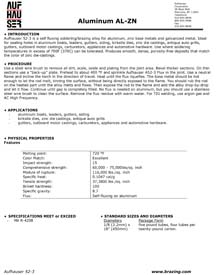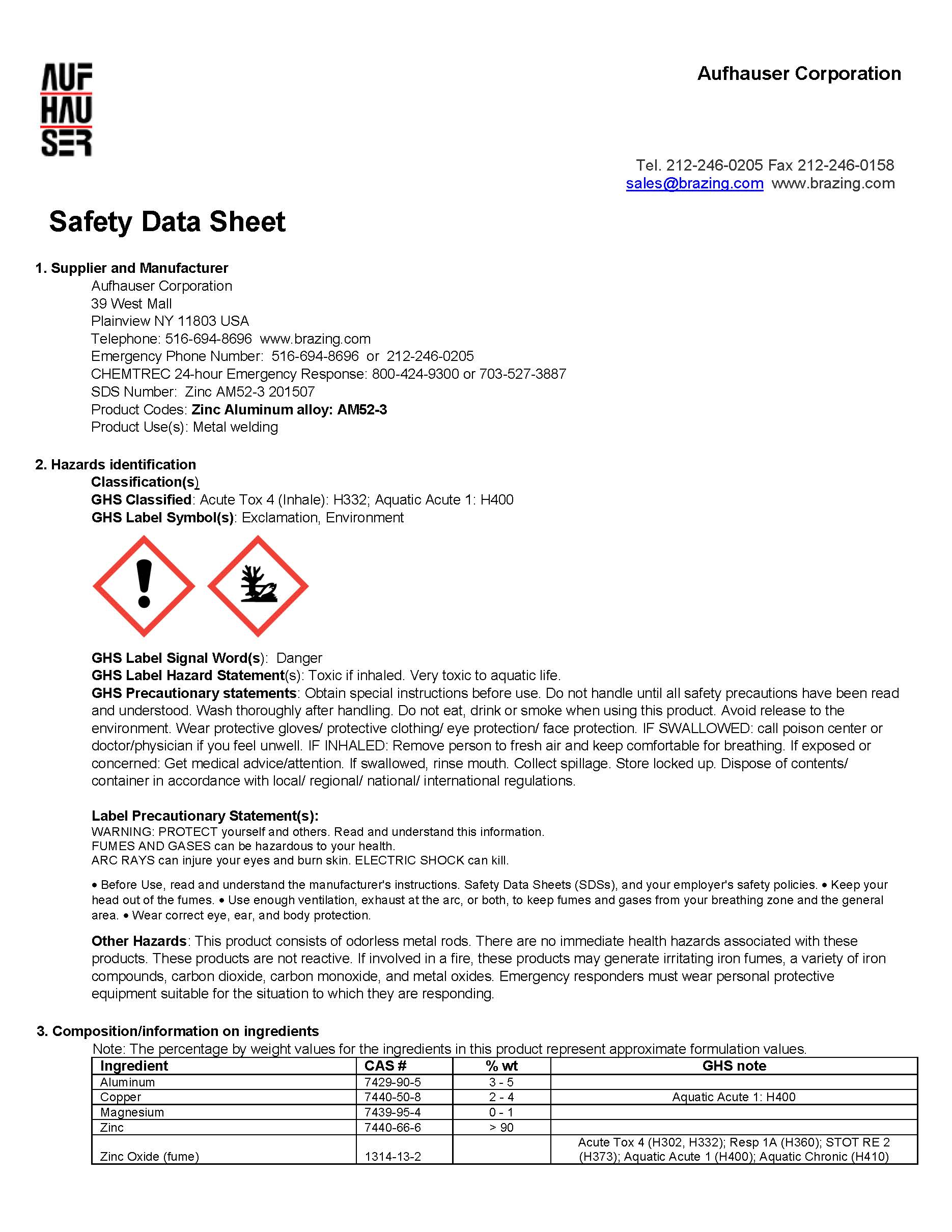Aluminum AL-ZN
INTRODUCTION
Aufhauser ALZN is a self fluxing soldering/brazing alloy for aluminum, zinc base metals and galvanized metal. Ideal for sealing holes in aluminum boats, leaders, gutters, siding, kirksite dies, zinc die castings, antique auto grills, outboard motor castings, carburetors, appliances and automotive hardware. Use where soldering temperatures in excess of 700°F (371°C) can be tolerated. Produces smooth, dense, porosity-free deposits that match the color of zinc die-castings.
APPLICATIONS
- gutters, leaders, framing, siding
- kirksite dies, zinc die castings, antique auto grills
- aluminum hulls, outboard motor castings, carburetors
- automotive hardware
- appliances
GENERAL INFORMATION
PHYSICAL and MECHANICAL PROPERTIES
| Melting Temperature | 720°F (382°C) |
| Color Match | Excellent |
| Impact Strength | 15 |
| Comprehensive Strength | 60,000 - 75,000 lbs/in² |
| Module of Rupture | 116,000 lbs/sq² |
| Specific Heat | 0.1047 cal/g |
| Tensile Strength | 37,000 psi |
| Brinell Hardness | 100 |
| Specific Gravity | 8.7 |
| Flux | Self-fluxing on aluminum |
SPECIFICATIONS MEET OR EXCEED
| MIL R-4208 |
STANDARD SIZING
| Diameter: 1/8" (3.2mm) x 18" (450mm) |
| Package: 5 lbs tube, 4 tubes per 20-lbs carton |
PROCEDURE
Use a steel wire brush to remove all dirt, scale, oxide and plating from the joint area. Bevel thicker sections. On thin sections use a "back-up" plate. Use a neutral flame and incline the torch in the direction of travel. Heat until the flux liquefies. The base metal should be hot enough to let the rod melt, tinning the surface, without being directly exposed to the flame. You should rub the rod on the heated part until the alloy melts and flows. Then expose the rod to the flame and add the alloy drop-by-drop and let it flow. Continue until gap is completely filled. No flux is needed on aluminum, but you should use a stainless steel wire brush to clean the surface. Remove the flux residue with warm water. For TIG welding, use argon gas and AC High Frequency.



